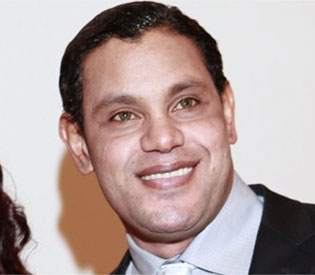The Dominican Republic’s highest court has taken away the citizenship rights of children of Haitian migrants born after 1929, meaning that more than 210,000 Dominican-born children of Haitian descent could be deported by next year.
On Thursday, the Dominican Republic’s Constitutional Court ruled to exclude a broad category of Haitians who were brought to work on sugarcane farms as well as their descendants. The court reasoned that Haitian farm workers in 1929 were “in transit,” which means that their children are not entitled to automatic citizenship. The ruling is final and cannot be appealed.
The electoral commission has one year to create a list of people who should be excluded from citizenship. There are currently about half a million Haitian-born people who live in the Dominican Republic and the ruling would affect at least 210,000 Dominican-born children of Haitian descent.
The government is considering deportation as an option for those children who have little or no ties to Haiti. According to Wade McMullen who told the Associated Press, “The majority of them don’t have Haitian citizenship, have little or no ties to Haiti and likely don’t speak Creole. Getting Haitian citizenship can be complicated too because it is difficult to comply with requirements to prove descent from a Haitian national.”
Haitian-born Elmo Bida Joseph, 21, who was denied a copy of his birth certificate said, “To all of a sudden be told no, you’re not Dominican, it’s very frustrating… I feel that’s around the corner. That in any moment I’ll be detained and they’ll send me to Haiti.”
Up until 2010, the Dominican Republic granted automatic citizenship to anyone born on Dominican Republic soil. But then, they narrowed citizenship criteria to children who were born to at least one parent of Dominican blood or whose foreign parents are legal residents. Thus far, more than 40,000 people of Haitian descent have been denied identity documents, with the government analyzing the birth certificates of at least 16,000 individuals.
The court and recent changes to the Dominican Republic’s Constitution rolled back what is known as “birthright citizenship.” In the United States, the right of those born on American soil to be U.S. citizens is guaranteed by the Constitution. But some lawmakers find birthright citizenship to be a problem– namely they want to ban birthright citizenship for children of undocumented migrants, some of whom also work on farms. Those lawmakers have long advocated for restricting birthright citizenship to children born on American soil to non-American parents. Yet immigration advocates fear that revoking birthright citizenship would create a permanent underclass of immigrants, with some individuals becoming “less-than-citizens.”
In the Dominican Republic, the deportation of so many Haitian-born individuals will likely cause a crisis in the coming year. It could also leave many of these individuals stateless, a type of banishment that would force them to experience the type of discrimination felt by 12 million other stateless people worldwide.
On Thursday, the Dominican Republic’s Constitutional Court ruled to exclude a broad category of Haitians who were brought to work on sugarcane farms as well as their descendants. The court reasoned that Haitian farm workers in 1929 were “in transit,” which means that their children are not entitled to automatic citizenship. The ruling is final and cannot be appealed.
The electoral commission has one year to create a list of people who should be excluded from citizenship. There are currently about half a million Haitian-born people who live in the Dominican Republic and the ruling would affect at least 210,000 Dominican-born children of Haitian descent.
The government is considering deportation as an option for those children who have little or no ties to Haiti. According to Wade McMullen who told the Associated Press, “The majority of them don’t have Haitian citizenship, have little or no ties to Haiti and likely don’t speak Creole. Getting Haitian citizenship can be complicated too because it is difficult to comply with requirements to prove descent from a Haitian national.”
Haitian-born Elmo Bida Joseph, 21, who was denied a copy of his birth certificate said, “To all of a sudden be told no, you’re not Dominican, it’s very frustrating… I feel that’s around the corner. That in any moment I’ll be detained and they’ll send me to Haiti.”
Up until 2010, the Dominican Republic granted automatic citizenship to anyone born on Dominican Republic soil. But then, they narrowed citizenship criteria to children who were born to at least one parent of Dominican blood or whose foreign parents are legal residents. Thus far, more than 40,000 people of Haitian descent have been denied identity documents, with the government analyzing the birth certificates of at least 16,000 individuals.
The court and recent changes to the Dominican Republic’s Constitution rolled back what is known as “birthright citizenship.” In the United States, the right of those born on American soil to be U.S. citizens is guaranteed by the Constitution. But some lawmakers find birthright citizenship to be a problem– namely they want to ban birthright citizenship for children of undocumented migrants, some of whom also work on farms. Those lawmakers have long advocated for restricting birthright citizenship to children born on American soil to non-American parents. Yet immigration advocates fear that revoking birthright citizenship would create a permanent underclass of immigrants, with some individuals becoming “less-than-citizens.”
In the Dominican Republic, the deportation of so many Haitian-born individuals will likely cause a crisis in the coming year. It could also leave many of these individuals stateless, a type of banishment that would force them to experience the type of discrimination felt by 12 million other stateless people worldwide.




